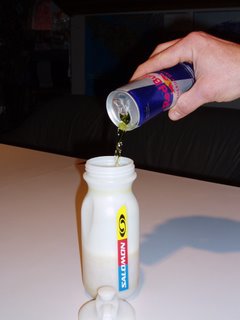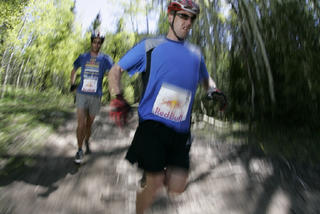Local riders gear up for La Ruta
By Andrew Mitchell
While most mountain bikers are getting ready to put their gear away for the winter, four local riders are preparing for a three-day race through the jungles of Costa Rica, from the Pacific to the Caribbean.
The race is considered among the toughest in the world. While La Ruta de los Conquistadores is only three days and mainly follows dirt roads and doubletrack, it’s also 318.4 kilometres long with 9,040 metres (29,700 feet) of climbing and descending. The first day has been described as pure hell with 4,526 metres of climbing over 114.1 km.
Factor in the heat, the humidity, and the fact that some roads turn to sticky clay in the rain (it’s hurricane season and it’s been raining the past seven weeks) and you can see why La Ruta is in the same league as the Trans Alp Challenge and TransRockies.
The four locals taking part in this year’s race, from Nov. 11 to 13, are Duncan Munro from Whistler, Hillary Harrison and Ryan Watts from Pemberton, and Charlotte Klein of Squamish.
Harrison is the only rider who has done the route before, growing up in Costa Rica with her parents. She won the women’s open category one year, and placed second to a friend the next.
She was hoping to be competitive again this year, but reigned in her expectations after being hit by a car while biking a few weeks ago. "After that I mellowed out, and my goal now is just to have fun with it," said Harrison, who also raced in the TransRockies this past August.
"It’s just a cool idea for a race, going from coast to coast like that, and you get to see so much. I saw more of the country than I did when I was living there," she said.
"The first day is the hardest day by far, there’s a lot of hike-a-bike and the climbs go on forever. The second day is a lot shorter, but still has a lot of climbing, but the last day is great, you actually finish right on the beach, on the Caribbean and there are people out there surfing and everyone is in such a great mood."
This year she’s taking her boyfriend Ryan Watts, who has done the Trans Alp Challenge a few times already. He has no idea what to expect, but he’s been told that the first day is pretty tough and to be afraid of the mud.
"I figured I was going to be down there so I might as well do it – it’s not every day you get an opportunity to ride from coast to coast in Coast Rica supported along the way," he said.
In the last month or so Watts has been in all of the big local races, including the Samurai of Singletrack and Cheakamus Challenge, and he still gets a lot of riding in out in Pemberton. Otherwise he thinks he’s about as ready as he can be.
"We’re going a week early, hopefully that helps me to get used to the humidity. Hopefully the rain stops… and I won’t have to carry the bike too much," he said. "I’d just really like to finish, I have no real expectations of placing anywhere – it’s a really strong field of competitors and teams, and Columbians and Costa Ricans who live at altitude and have the home field advantage."
Munro is the only sponsored rider heading to Costa Rica, with support from Gerber Knives and Tools, and his running sponsor Salomon.
He’s been training hard for almost two months, and has even taken a stationary bike into the sauna, wearing a down jacket and touque to get used to riding in the heat.
"It gets pretty gross, I’m not going to lie to you," he said.
Munro did a 20 km beach run in Rio de Janeiro as part of a Red Bull Giants of Rio relay team last year, and wasn’t prepared for the heat. He fell ill with dehydration and heat stroke, and was sick several times on his way to the finish line. "I’m not doing that again," he added.
In addition to the sauna, he’s also been putting in a lot of miles on a road bike recently to get used to distances involved.
But for all his preparation, Munro is just hoping to finish.
"This is my third mountain bike race ever, not including the Loonie races. Part of me is worried that I bit off more than I could chew, but I’ve been training well and I’m not expecting much. I just want to enjoy myself out there, ride at the back of the pack and have a good laugh."
Klein, who competed in the Cycling B.C. Marathon Series this year and the Nelson triple crown, is looking at La Ruta as an opportunity to train for the TransRockies next season.
Her goal is to "feel good" on the course, and she’s been going for a lot of long rides to get ready for the challenge.
"I don’t know if you can prepare for something like this without living there, so I’m just going to go out there and do it and have fun with it" she said, joking that she’s not going to follow Munro’s lead "and do something weird like biking in a sauna – nothing good can happen doing that."
The La Ruta race is attracting some of the world’s top riders this year, including NORBA champion Walker Ferguson. Harrison believes he will be the first non-Costa Rican to win the race.
You can follow La Ruta online at www.adventurerace.com.

















